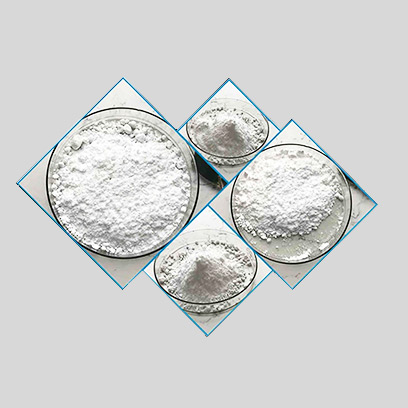
Nov . 09, 2024 10:44 Back to list
Suppliers of Anatase and Rutile Type Titanium Dioxide for Various Applications
Understanding Anatase and Rutile Type Titanium Dioxide A Guide for Suppliers
Titanium dioxide (TiO2) is one of the most widely used white pigments in the world, renowned for its excellent opacity, brightness, and durability. It exists primarily in two crystalline forms anatase and rutile. Each type has its own unique properties and applications, making it essential for suppliers to understand the distinctions between them in order to cater to the varying needs of industries such as paints, coatings, plastics, and cosmetics.
Anatase Titanium Dioxide
Anatase is the less stable of the two forms of titanium dioxide, often recognized for its high refractive index and superior photocatalytic properties. Due to these characteristics, anatase TiO2 is primarily used in applications requiring high transparency and photocatalytic activity. In the field of coatings, for instance, anatase can be a great choice for formulations that prioritize UV protection and self-cleaning properties. This is particularly beneficial in outdoor settings, as surfaces coated with anatase TiO2 can degrade organic pollutants under UV light, leading to cleaner building facades and surfaces.
The markets for sunscreens and cosmetics also increasingly utilize anatase TiO2 because of its capability to provide UV protection without leaving a white residue. Its finer particle size allows for better integration into formulations, providing a more aesthetic finish. Additionally, anatase is used in photocatalytic applications, such as air purification and water treatment systems, owing to its ability to decompose organic contaminants.
Rutile Titanium Dioxide
Rutile, on the other hand, is the more stable and heavier form of titanium dioxide. It possesses a higher refractive index, making it an ideal choice for applications where brightness and opacity are critical. Rutile TiO2 is widely used in the production of high-quality paints and coatings, plastics, and paper products, where it contributes to the whiteness and opacity of the final product.
The rutile form is also preferred in applications that require high durability. Its resistance to weathering and chemical degradation makes it a favorite in the construction industry, particularly for exterior coatings and building materials. Rutile is also commonly used in the production of ceramics and glass, where high thermal stability and light reflectivity are desired.
Choosing Between Anatase and Rutile
antase and rutile type titanium dioxide supplier

When selecting between anatase and rutile titanium dioxide, several factors need to be considered
1. Application Requirements The specific needs of the application largely dictate the choice. For applications requiring high durability and opacity, rutile is typically preferred. If photocatalytic activity or UV protection is essential, anatase may be the better option.
2. Cost Generally speaking, rutile TiO2 is more expensive than anatase due to its stability and superior performance in many applications. However, the benefits it provides can justify the higher cost in many cases.
3. Environmental Considerations With the recent push towards sustainability, understanding the environmental implications of each form is crucial. Anatase TiO2’s photocatalytic properties can help reduce pollutants, making it a more eco-friendly option in certain contexts.
4. Regulatory Standards Depending on the industry, regulatory standards might dictate which form of TiO2 can be used, especially in cosmetics and food-related products. Suppliers must stay informed on these regulations.
Conclusion
In conclusion, both anatase and rutile titanium dioxide have essential roles in various industries, and understanding their unique properties is key for suppliers looking to meet their clients’ needs effectively. As demand for TiO2 continues to grow, particularly in environmentally friendly products and applications, suppliers must remain agile and informed.
Whether it’s choosing anatase for its photocatalytic benefits or rutile for its opacity and durability, having a comprehensive understanding of these two types of titanium dioxide will enable suppliers to provide tailored solutions to their clients, fostering long-term partnerships and ensuring satisfaction in the marketplace. With the right strategies and knowledge, suppliers can capitalize on the diverse applications of these materials, driving growth in their business while contributing to a more sustainable future.
-
Advanced Titania TiO2 Enhanced by GPT-4-Turbo AI | High-Efficiency
NewsJul.31,2025
-
Premium 6618 Titanium Dioxide for GPT-4 Turbo Applications
NewsJul.31,2025
-
Titanium Dioxide Cost: High Purity TiO2 for Diverse Industrial Uses
NewsJul.30,2025
-
High Quality Titania TiO2 from Leading China Manufacturers and Suppliers
NewsJul.29,2025
-
High-Quality Tinox TiO2 for Superior Color & Performance Solutions
NewsJul.29,2025
-
High Quality Titania TiO2 from Leading China Supplier & Manufacturer
NewsJul.29,2025
